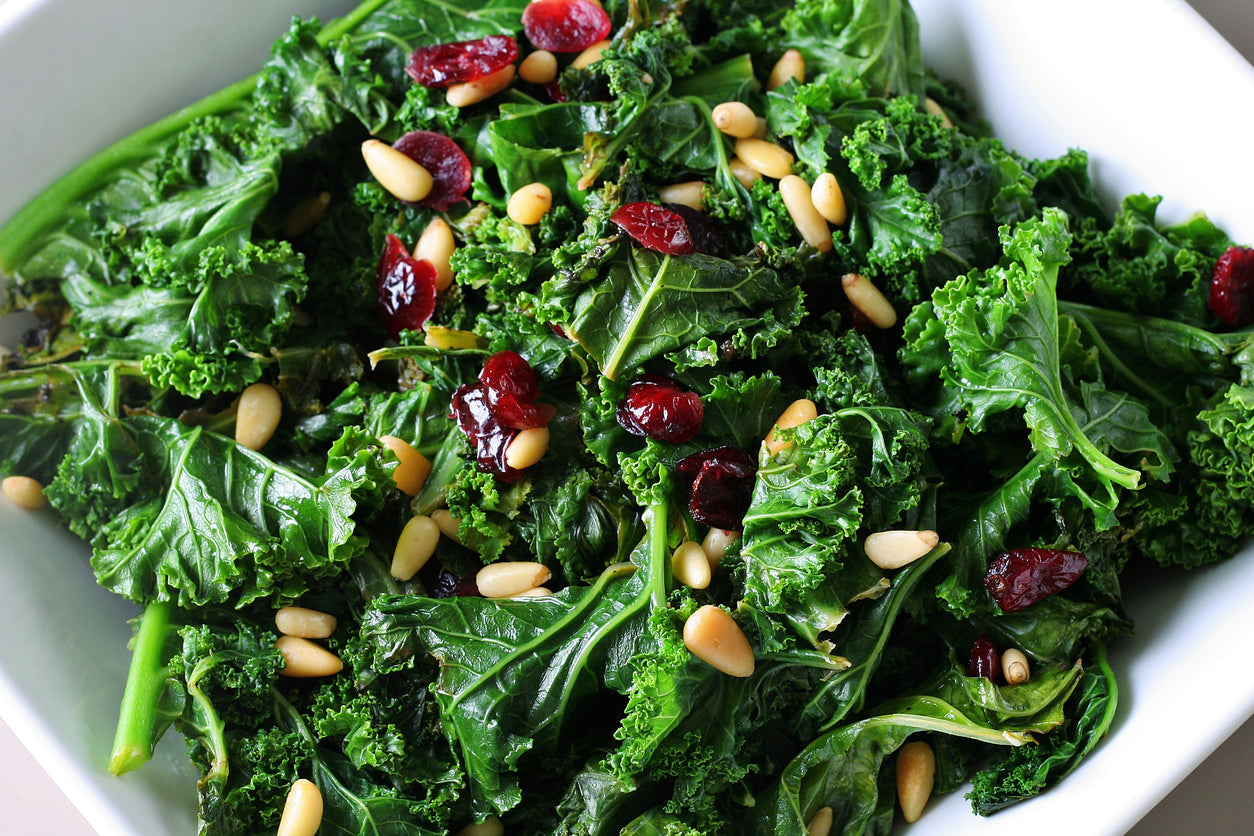Kale is an outstanding addition to your diet - here's WHY

Over the past decade, the popularity of kale has soared. Beloved by dietitians and natural health experts for its disease-fighting abilities and top-quality nutrition, this dark leafy green is easy to incorporate into salads and recipes. And, kale aficionados know that crispy kale chips are a savory alternative to potato chips – minus the calories, unhealthy fats, pro-inflammatory oils and high levels of sodium.
In addition to its inclusion in the wholesome “green leafy” category, kale - botanically known as Brassica oleracea - is also a cruciferous vegetable, and contains many of the same cancer-fighting compounds as broccoli, Brussels sprouts and cauliflower.
How does kale help you to avoid heart health issues?
A cup of cooked kale features a healthy 4.7 grams of both soluble and insoluble fiber. This allows it to lower fats in the blood and reduce LDL cholesterol, while preventing the oxidative damage that contributes to atherosclerosis and heart disease.
In addition, kale contains an antioxidant flavonoid known as quercetin, which inhibits the negative effects of free radicals and also helps to protect cells and tissues from oxidative damage. And, kale is a good source of betaine, a compound found in beets and spinach.
In fact, studies have shown that betaine increases the production of beneficial nitric oxide, which helps to relax blood vessels and lower blood pressure.
Incidentally, kale also contains five times the recommended dietary intake of vitamin K. Studies have shown that this important nutrient provides a huge health bonus by helping to keep calcium out of the blood and in the bones - where it belongs. Kale’s contributions to heart health have not gone unnoticed by scientists. In a study published in the Indian Journal of Biochemistry and Biophysics, researchers noted that kale “plays an important role in the prevention of atherosclerosis and heart disease.”
Why should cancer patients care about eating kale?
The truth is: the health benefits of kale are just getting started. This leafy vegetable is high in insoluble fiber, which speeds the elimination of toxins from the body. Kale is also a great source of chlorophyll, which binds to heterocyclic amines (carcinogenic chemicals that can be released when animal foods are grilled at high temperatures) and prevents the body from absorbing them.
You could almost say that chlorophyll functions as a veggie “bodyguard,” throwing itself between body tissues and harmful substances. Natural health experts maintain that serving kale at cookouts and barbecues may alleviate some of the dangers presented by chargrilled animal products. Not that we're suggesting that you go out and grill food, every day.
In addition, kale’s membership in the cruciferous vegetable family means that it contains the same cancer-fighting glucosinolates as its cousins, which include Brussels sprouts, cauliflower and broccoli. Finally, kale contains the trace element selenium. The National Institutes of Health cites a scientific review in which people with higher dietary intake of selenium had an impressive one-third lower risk of certain cancers than those in the lowest selenium-consuming bracket.
Protect your vision, skin and hair with a healthy serving of kale
Kale provides a wealth of additional health benefits. For example, eating one cup of chopped kale contributes over 20 percent of the daily recommended intake of vitamin A - which is necessary for the maintenance of skin and hair - and almost a quarter of the RDI for antioxidant vitamin C, which is essential for the production of collagen.
Kale is also high in lutein and zeaxanthin, a pair of carotenoids (natural plant pigments) which may help to prevent age-related macular degeneration and cataracts. Surprisingly, kale contains 120 mg of anti-inflammatory omega-3 fatty acids - much higher content than is found in other vegetables. At a reasonable 42 calories a cup, kale won’t torpedo your budget for the day. In fact, this high-fiber, satisfying vegetable may even help protect against binge eating.
Enhance your favorite recipe by adding some kale
If you’ve grown to crave your fix of nutrient-packed kale, you can enjoy it in various forms. Curly kale, the most prevalent variety in the United States, has tightly frilled leaves with a tangy taste, and can be bright green, deep green or even purple in color. Lacinato, or dinosaur kale, is bluish green in color, with a more mellow taste. Red Russian kale - which is not as commonly available - features flat leaves and a piquant lemony flavor.
Before eating any type of kale, you should strip the tasty leaves from the tough central rib. This makes it a quick way to steam or boil a healthy side dish of kale. Remember, the stems would take much longer to cook versus just the leafy part.
You can add raw kale to a salad, wrap or green smoothie. And, since kale’s taste and texture hold up well to cooking, don’t be afraid to steam or saute it for use in soups, quiches and pesto sauce.
For spicy kale chips, simple “de-rib” kale leaves and toss them in olive oil. Sprinkle with cumin, chili powder, garlic powder and roasted red pepper flakes, and bake at 275 degrees for 15 to 30 minutes or until crispy.
Because of kale’s large amounts of vitamin K, some people should restrict their consumption. If you have kidney disease or are taking beta blockers or blood thinners, consult your doctor before eating kale.
Bottom line: With so many vitamins, minerals, fiber and antioxidants, kale richly deserves its reputation as a superfood. If you’ve been steering clear of kale, maybe it’s time to add this worthy vegetable to your healthy diet. Your body will thank you.
Sources for this article include:






